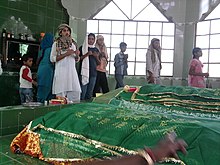
A shrine is a sacred space dedicated to a specific deity, ancestor, hero, martyr, saint, daemon, or similar figure of respect, wherein they are venerated or worshipped. Shrines often contain idols, relics, or other such objects associated with the figure being venerated. A shrine at which votive offerings are made is called an altar.
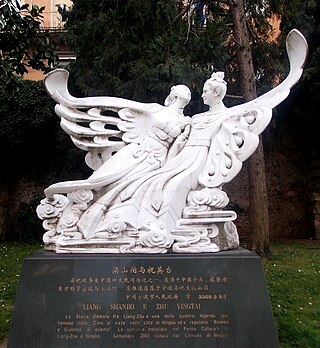
The Butterfly Lovers is a Chinese legend centered around the tragic romance between Liang Shanbo (梁山伯) and Zhu Yingtai (祝英臺), whose names form the Chinese title of the story. The title is often abbreviated as Liang Zhu (梁祝).
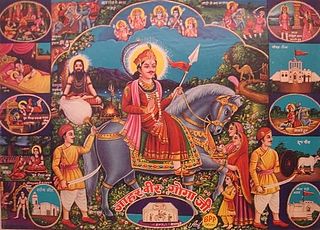
Gogaji, also known as Gogaji Maharaj, is a folk deity in Rajasthan. He is worshipped in the northern states of India especially in Rajasthan, Himachal Pradesh, Haryana, Uttarakhand, Punjab region, Uttar Pradesh, Jammu and Gujarat. He is a warrior-hero of the region, venerated as a saint and a protector against snake bites. Although there are references to him in the folklore of Rajasthan, little historical knowledge of Gugga exists other than that he ruled the small kingdom of Dadrewa and was a contemporary of Prithviraj Chauhan.

Sri Ganganagar is the northernmost city of the Indian state of Rajasthan, near the international border of India and Pakistan. It is the administrative headquarters of Sri Ganganagar district. It is named after Maharaja Shri Ganga Singh Bahadur, Maharaja of Bikaner. The city is also known as the "Food Basket of Rajasthan".

Jahanara Kajjan, or "Miss Kajjan", was an Indian singer and actress active during the 1920s and 1930s, often referred to as the "Nightingale of Bengal". The reigning queen of early talkie movies glamorous movie sensation the trained classical singer, the fashion icon and the trendsetter, Jahanara Kajjan she was known as "Lark of Hindi Cinema" and the "Beautiful Nightingale of Bengal Screen". She along with Master Nissar made most sought after and popular singing pair of the stage and film.

A mazār, also transliterated as mazaar, also known as marqad (مَرْقَد) or in the Maghreb as ḍarīḥ (ضَرِيْح), is a mausoleum or shrine in some places of the world, typically that of a saint or notable religious leader. Medieval Arabic texts may also use the words mašhad (مَشْهَد) or maqām to denote the same concept.

A Punjabi Qissa is a tradition of Punjabi language oral story-telling that emerged in Punjab region of eastern Pakistan and northwestern India, with the fusion of local Punjabi people and migrants from the Arabian peninsula and contemporary Iran.
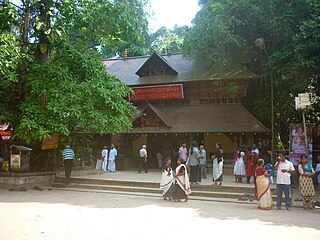
Mannarasala Sree Nagaraja Temple in Haripad is a very ancient and internationally known centre of pilgrimage for the devotees of serpent Gods (Nagaraja). The famous Nagaraja temple "Mannarasala" in Haripad is nestled in a forest glade, like most snake temples. The Mannarasala Temple has over 100,000 images of snakes along the paths and among the trees, and is the largest such temple in Kerala, India. Couples seeking fertility come to worship here, and upon the birth of their child come to hold thanksgiving ceremonies here, often bringing new snake images as offerings. A special turmeric paste which is available at the temple is credited with curative powers.
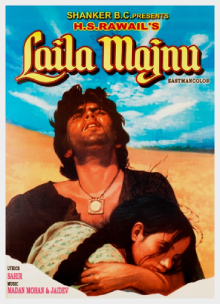
Laila Majnu is a 1976 Indian Hindustani-language romantic drama film directed by Harnam Singh Rawail and starring Rishi Kapoor, Ranjeeta and Danny Denzongpa in lead roles. The film's music is by Madan Mohan and Jaidev. Based on the legend of Layla and Majnun, it tells the story of two star-crossed lovers: Laila, a princess and Qais a.k.a. Majnu, a common man.

Aaja Nachle is a 2007 Indian Hindi-language dance film produced by Aditya Chopra and directed by Anil Mehta. The film stars Madhuri Dixit in her first film in five years after Devdas (2002), alongside Konkona Sen Sharma, Jugal Hansraj, and Kunal Kapoor in pivotal roles.
Sonana Khetlaji is a temple of God Khetlaji located in the village Sonana of Desuri tehsil of Pali district in Indian state of Rajasthan.
Safedbulan is a village in Ala-Buka District, Jalal-Abad Region, Kyrgyzstan. Its population was 6,707 in 2021. It is also an archaeological reserve that is considered sacred for Muslims. The village is in an area in the north-western part of the Fergana Valley, on the border with Uzbekistan. It lies on the river Chanachsay, 14 km east of Ala-Buka and 11 km southwest of Kerben. The settlement is at least one thousand years old and is mentioned in medieval, Arabic and Persian scriptures under the name Isbid Bulan.
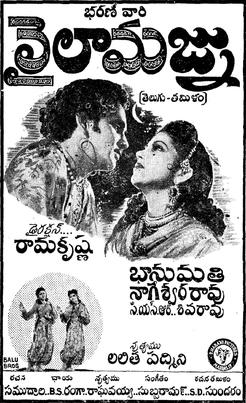
Laila Majnu is a 1949 Telugu-language historical romance film, based on the Sufi legend of Laila-Majnu. It is produced and directed by P. S. Ramakrishna Rao under the Bharani Pictures banner. It stars Akkineni Nageswara Rao and Bhanumathi, with music composed by C. R. Subburaman. The film was simultaneously released in Tamil with same title. The film was successful at the box office.

Layla and Majnun is an old story of Arab origin, about the 7th-century Arabic poet Qays ibn al-Mulawwah and his lover Layla bint Mahdi.
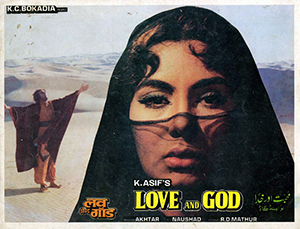
Love and God is a 1986 Indian Hindi-language film which was the final film produced and directed by K. Asif. This film was his only directorial venture to be made completely in color. Through this film, the director wanted to convey the legendary love story of Laila Majnu, starring Nimmi as Laila and Sanjeev Kumar as Qais a.k.a. Majnu.
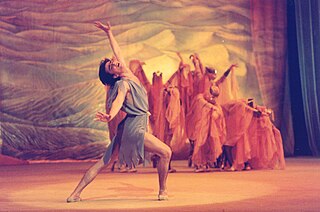
Leyli and Majnun a classic Azerbaijani story of love couple; it is a one-act ballet by Azerbaijani composer Gara Garayev. The libretto is based on Nizami Ganjavi's poem Layla and Majnun. The choreographer of the original production was Nelya Nazirova. The premiere, conducted by R. D. Abdullayev, took place on 25 May 1969 at the Azerbaijan State Academic Opera and Ballet Theater in Baku, with V. N. Pletnev as Majnun and T. N. Mamedova as Leyli. Nazirova's production was the basis of the ballet film In the World of Legends that was filmed by the creative association Ekran in 1975.
"Layla and Majnun" is the third poem of the classic of Nizami Ganjavi. This poem is included in "Khamsa" and was written in 1188 in Persian. It is based on the story of the ancient Arabic legend "Layla and Majnun" about the unhappy love of the young man Qays, nicknamed "Majnun", towards beautiful Layla. The poem is dedicated to Shirvanshah Ahsitan I, and was written on his order. There are 4600 stanzas in the poem. This poem is considered as the first literary processing of the legend.

Laila Majnu is a 2018 Indian Hindi-language romantic drama film starring Avinash Tiwary and newcomer Tripti Dimri. It is directed by Sajid Ali, presented by Imtiaz Ali and co-produced by Ekta Kapoor, Shobha Kapoor and Preety Ali. The film is a contemporary retelling of the story of Layla and Majnun.
Ma Ambika Mandir is a Hindu temple located in the village of Musen Mata, about 50 km south of Baran in the state of Rajasthan, India. Ma Ambika, a form of Goddess Durga, is the presiding deity of the temple. Ma Ambika Mandir is situated on the banks of Bhupasi River. This temple is situated in the middle of a forest. It is forbidden to encroach on this forest. Even wood cannot be cut in this forest. The temple is known for its beautiful architecture and serene surroundings.

Minjar Mela, also known as the Minjar Fair, is a popular annual festival celebrated in the state of Himachal Pradesh in India. It has been granted the status of international fair by govt of Himachal Pradesh .The fair is held in the town of Chamba, which is located in the scenic Chamba Valley. Minjar Mela is a week-long event that typically takes place in the month of July. The festival holds great cultural and historical significance for the people of Chamba. It is celebrated to mark the harvesting of the maize crop and to seek blessings for a bountiful year ahead. The highlight of Minjar Mela is the Minjar procession, which is a grand and colorful event. The procession is led by a decorated chariot, accompanied by folk dancers, musicians, and devotees dressed in traditional attire. People from nearby villages and towns join the procession, adding to the festive atmosphere.


